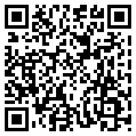Digital OOH – What’s up Australia?
Share
News from the UK’s Outdoor Media Centre (OMC) shows UK digital out of home (DOOH) revenues continuing to grow at a rapid rate. Why? It’s the happy convergence of OOH operators spending a very large amount of money on digitising a meaningful proportion of their inventory, and advertisers big and small diving into the space with gusto. That mirrors an emerging trend worldwide, with OOH (and DOOH within it) broadly tipped to be the second fastest growing medium in 2012, behind online.
In financial terms, the UK outcome translates into £39.3m in DOOH spend in Q4 2011, taking the 2011 total to something near £124m or 14% of all OOH, which in turn is about 9.4% of all UK display advertising. DOOH numbers aren’t measured or distributed by the industry association in Australia, in part because only a very small number of OOH companies have really committed properly to the space, and in part because some of the niche DOOH players are not part of the Australian Outdoor Media Association.
So was it the chicken or the egg in the UK? Was this truly the market demanding everything that DOOH provides and operators following that lead? Or was it the other way around? My view is that it’s a bit of both.
After a fair bit of hesitation in the mid-2000s, the largest OOH operators have dived headlong into DOOH, particularly in indoor environments. Airports, malls and train stations have been the main focus areas. I don’t think it’s unfair to say some of the early efforts were a little haphazard, but good, meaningful networks are now in place in key environments: well-built, well-positioned and with good technology. Some brands were in from the outset, some took a while to join the party and some still remain on the outside, looking in.
The biggest difference between DOOH in the UK and Australia for me, though, is how brands are using it. In Australia we’ve seen any number of campaigns that run good, interesting, eye catching, effective animated content. They do a great job of using digital to bring their brand to life and long may they last. And we’ve seen a few that go a bit further: day parting, RSS feeds, interactive and so on. In the UK (and scale is undoubtedly important here) the curiosity of marketers and creatives has pushed the boundaries much more aggressively. Campaigns that are event or date specific, day parted, interactive, or augmented in some way are so frequent that they are almost commonplace. And whilst I don’t get to see every post-campaign analysis, I’m pretty sure that this momentum is a direct outcome of good results on previous campaigns encouraging further experimentation and breakthroughs.
With the momentum seen in the UK, we need to ask is there structural difference to Australia driving that, or are we just at a different point in the cycle? Digital billboards are an important part of the media mix in the UK and their numbers have exploded in recent years. With the current governing regulations, no animation is allowed on billboards on main roadways, but timeliness, flexibility and SOV are all being used in spades. From a regulatory perspective, Australia lags a little but hopefully more widespread deployment of outdoor digital billboards shouldn’t be too far away.
But digital billboards are only part of the UK story. By far the biggest investment in terms of dollars and scale has been (in chronological order) airports, malls and train/tube stations. Smaller cheap and nasty businesses have generally disappeared, some consolidation has occurred, format uniformity and consistency are being delivered and campaigns are working for brands. OOH companies are building DOOH starting with the customer proposition, not the technology. That very obvious fact took quite a while to sink in and plenty of failed businesses and disappointed clients resulted, not just in the UK but Europe, North America, and to some extent, in Australia.
Just like the UK, there are luddites here too, both OOH companies and advertisers. Obvious self interest aside, DOOH is not the be all and end all. But it’s a segment of a traditional sector that is moving fast. The core strength of OOH right now remains in the more ‘traditional’ space. But for how long? I’ve written previously about QR codes and how they are working with OOH – mobile technology in all its forms will fundamentally change OOH as much as it will change other media. DOOH won’t answer all of your needs, but it can be an important part of a campaign. Demand it, and demand it be done right. Dare to be different – challenge OOH companies to deliver and use the medium to its greatest capacity.
There’s a raft of UK DOOH case studies here for those that are interested. Or for those that like QR codes, scan here to get there:

Warning: not a mobile friendly site [Ed’s note – These guys might not be happy about that, Jeremy. Or this guy].















